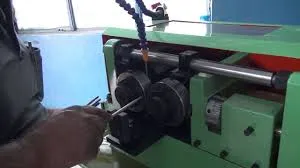
-
 Afrikaans
Afrikaans -
 Albanian
Albanian -
 Amharic
Amharic -
 Arabic
Arabic -
 Armenian
Armenian -
 Azerbaijani
Azerbaijani -
 Basque
Basque -
 Belarusian
Belarusian -
 Bengali
Bengali -
 Bosnian
Bosnian -
 Bulgarian
Bulgarian -
 Catalan
Catalan -
 Cebuano
Cebuano -
 Corsican
Corsican -
 Croatian
Croatian -
 Czech
Czech -
 Danish
Danish -
 Dutch
Dutch -
 English
English -
 Esperanto
Esperanto -
 Estonian
Estonian -
 Finnish
Finnish -
 French
French -
 Frisian
Frisian -
 Galician
Galician -
 Georgian
Georgian -
 German
German -
 Greek
Greek -
 Gujarati
Gujarati -
 Haitian Creole
Haitian Creole -
 hausa
hausa -
 hawaiian
hawaiian -
 Hebrew
Hebrew -
 Hindi
Hindi -
 Miao
Miao -
 Hungarian
Hungarian -
 Icelandic
Icelandic -
 igbo
igbo -
 Indonesian
Indonesian -
 irish
irish -
 Italian
Italian -
 Japanese
Japanese -
 Javanese
Javanese -
 Kannada
Kannada -
 kazakh
kazakh -
 Khmer
Khmer -
 Rwandese
Rwandese -
 Korean
Korean -
 Kurdish
Kurdish -
 Kyrgyz
Kyrgyz -
 Lao
Lao -
 Latin
Latin -
 Latvian
Latvian -
 Lithuanian
Lithuanian -
 Luxembourgish
Luxembourgish -
 Macedonian
Macedonian -
 Malgashi
Malgashi -
 Malay
Malay -
 Malayalam
Malayalam -
 Maltese
Maltese -
 Maori
Maori -
 Marathi
Marathi -
 Mongolian
Mongolian -
 Myanmar
Myanmar -
 Nepali
Nepali -
 Norwegian
Norwegian -
 Norwegian
Norwegian -
 Occitan
Occitan -
 Pashto
Pashto -
 Persian
Persian -
 Polish
Polish -
 Portuguese
Portuguese -
 Punjabi
Punjabi -
 Romanian
Romanian -
 Russian
Russian -
 Samoan
Samoan -
 Scottish Gaelic
Scottish Gaelic -
 Serbian
Serbian -
 Sesotho
Sesotho -
 Shona
Shona -
 Sindhi
Sindhi -
 Sinhala
Sinhala -
 Slovak
Slovak -
 Slovenian
Slovenian -
 Somali
Somali -
 Spanish
Spanish -
 Sundanese
Sundanese -
 Swahili
Swahili -
 Swedish
Swedish -
 Tagalog
Tagalog -
 Tajik
Tajik -
 Tamil
Tamil -
 Tatar
Tatar -
 Telugu
Telugu -
 Thai
Thai -
 Turkish
Turkish -
 Turkmen
Turkmen -
 Ukrainian
Ukrainian -
 Urdu
Urdu -
 Uighur
Uighur -
 Uzbek
Uzbek -
 Vietnamese
Vietnamese -
 Welsh
Welsh -
 Bantu
Bantu -
 Yiddish
Yiddish -
 Yoruba
Yoruba -
 Zulu
Zulu
types of thread rolling product
Types of Thread Rolling Products
Thread rolling is a highly efficient and precise metal forming process used to create threads on cylindrical parts. This technique utilizes hardened dies to deform the surface of the material, producing threads that are stronger and more accurate than those made by cutting. With various types of thread rolling products available, each serving unique applications in different industries, it's essential to understand the distinctions and benefits of these products.
1. External Threads
External thread rolling involves forming threads on the outside of a cylindrical workpiece. This is one of the most common types of thread rolling, often used in the production of items like bolts, screws, and studs. The thread profile created is typically more robust than cut threads, improving the shear strength and load-bearing capacity of the fastener. Key industries that utilize external thread rolling include automotive, construction, and heavy machinery, where reliable fastening solutions are critical.
2. Internal Threads
Internal thread rolling, on the other hand, is used to create threads on the inside of a hollow workpiece. This process is crucial for producing components such as nuts and fittings that are used in various applications. Internal thread rolling typically employs a process called “cold rolling,” which ensures tighter tolerances and a superior finish, making it preferable for high-precision applications in aerospace and medical device manufacturing.
Roll formed threads are created by the rolling process itself, which can involve multiple passes through a die to achieve the desired thread depth and profile. This method is particularly effective for producing long, continuous threads on bars or tubes. Roll formed threads are common in applications requiring long fasteners like bolts and rods that must be both strong and lightweight. The finished threads exhibit excellent fatigue resistance, making them ideal for applications in high-stress environments.
types of thread rolling product

4. Multiple-start Threads
For certain applications, multiple-start threads are required. This is where two or more threads are formed side by side on the same workpiece. This design allows for quicker assembly and higher load capacities, as they provide more surface area for contact. Multiple-start threads are often used in industrial applications, such as hydraulic cylinders and lead screws, where quick engagement and disengagement are necessary.
5. Triangular and Square Threads
While most thread rolling processes focus on the standard Unified National Thread (UN) profile or metric threads, specialized applications may require triangular or square threads. Triangular threads are often used in applications requiring high torque, such as in screw jacks or mechanical lifts. Square threads offer minimal friction, which is beneficial in applications calling for efficiency in power transmission. Both types can be produced through threading rolling for enhanced durability and performance.
6. Threading for Special Materials
With advancements in thread rolling technology, it is now possible to work with a variety of materials, including high-strength steels, aluminum alloys, and even certain plastics. This versatility allows manufacturers to create threads that meet specific performance criteria dictated by the application’s environment, whether it is high temperature, moisture, or corrosive conditions.
Concluding Thoughts
The importance of thread rolling cannot be overstated, as it provides a faster, more efficient means to produce strong and precise threaded products. Each type of thread rolling product has distinct features tailored to various industrial needs, from the robust external threads used in construction to the precision internal threads found in medical devices. As technology continues to evolve, we can anticipate even more innovations in the thread rolling process, enhancing product quality and production efficiency in countless applications. Understanding these different types of thread rolling products is critical for engineers and manufacturers aspiring to optimize their designs and production methodologies.
